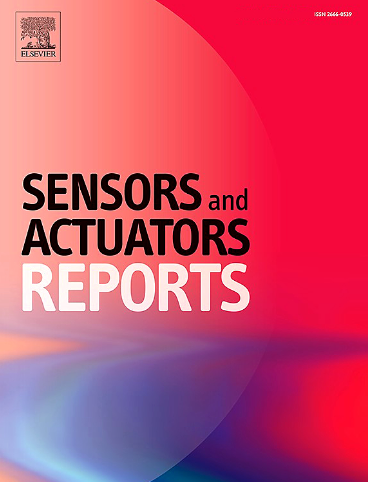A multi-sensing quinazoline-derived fluorescent sensor for selective detection of Ru3+, Ir3+, Th4+, and UO22+ with environmental applications
IF 7.6
Q1 BIOTECHNOLOGY & APPLIED MICROBIOLOGY
引用次数: 0
Abstract
The chemosensor, 2-(10-hydroxybenzo [h]quinolin-9-yl) quinazolin-4(3H)-one (SP55) was successfully synthesized in a two-step synthesis reaction and confirmed through characterisation techniques like NMR spectroscopy, FT-IR, and HR-MS. For the optical experiments, the ligands were solubilized with a solvent mixture of (8:2) acetonitrile and water, whereas the cation salts were dissolved in water. The absorption studies ensure sensitivity only to Ru3+, Ir3+, Th4+, and uranyl nitrate (UO22+), compared to other cations. The absorption and emission tests indicated that the emission intensified on adding Ru3+, Ir3+, Th4+, and uranyl nitrate (UO22+) ions with blue shift and absorption also intensified but with red shift The limit of detection (LoD) was 0.44 nM for Ru3+, 2.35 nM for Ir3+, 1.64 nM for Th4+, and 1.99 nM for UO22+. The complex formation between the sensor and metals was confirmed using FT-IR, HR-MS, Job's plot, DFT, and 1H NMR titration analyses. Furthermore, we used the SP55 chemosensor to detect Ru3+, Ir3+, Th4+, and uranyl nitrate (UO22+) in environmental water samples.

一种多传感喹唑啉衍生荧光传感器,用于选择性检测Ru3+, Ir3+, Th4+和UO22+,具有环境应用
化学传感器2-(10-羟基苯并[h]喹啉-9-基)喹唑啉-4(3H)- 1 (SP55)通过两步合成反应成功合成,并通过NMR波谱、FT-IR和HR-MS等表征技术进行了证实。在光学实验中,配体用(8:2)乙腈和水的溶剂混合物溶解,而阳离子盐则溶解在水中。与其他阳离子相比,吸收研究确保仅对Ru3+, Ir3+, Th4+和硝酸铀酰(UO22+)敏感。吸收和发射试验表明,Ru3+、Ir3+、Th4+和硝酸铀酰(UO22+)离子加入后,发光增强,蓝移增强,吸收增强,红移增强,检出限(LoD) Ru3+为0.44 nM, Ir3+为2.35 nM, Th4+为1.64 nM, UO22+为1.99 nM。通过FT-IR, HR-MS, Job’s plot, DFT和1H NMR滴定分析证实了传感器与金属之间的配合物形成。此外,我们使用SP55化学传感器检测环境水样中的Ru3+, Ir3+, Th4+和硝酸铀酰(UO22+)。
本文章由计算机程序翻译,如有差异,请以英文原文为准。
求助全文
约1分钟内获得全文
求助全文
来源期刊

Sensors and Actuators Reports
Multiple-
CiteScore
9.60
自引率
0.00%
发文量
60
审稿时长
49 days
期刊介绍:
Sensors and Actuators Reports is a peer-reviewed open access journal launched out from the Sensors and Actuators journal family. Sensors and Actuators Reports is dedicated to publishing new and original works in the field of all type of sensors and actuators, including bio-, chemical-, physical-, and nano- sensors and actuators, which demonstrates significant progress beyond the current state of the art. The journal regularly publishes original research papers, reviews, and short communications.
For research papers and short communications, the journal aims to publish the new and original work supported by experimental results and as such purely theoretical works are not accepted.
 求助内容:
求助内容: 应助结果提醒方式:
应助结果提醒方式:


